Snow Joe 24V-SUV1 Handleiding
Bekijk gratis de handleiding van Snow Joe 24V-SUV1 (44 pagina’s), behorend tot de categorie Speelgoed. Deze gids werd als nuttig beoordeeld door 33 mensen en kreeg gemiddeld 4.6 sterren uit 17 reviews. Heb je een vraag over Snow Joe 24V-SUV1 of wil je andere gebruikers van dit product iets vragen? Stel een vraag
Pagina 1/44

© 2022 by Snow Joe
®, LLC
All rights reserved. Original instructions. SAVE THESE INSTRUCTIONS
A Division of Snow Joe
®, LLC Model 24V-SUV1 Form No. SJ-24V-SUV1-880E-M
OPERATOR’S MANUAL
1
EN
RKIDS RIDE
-
ON SUV
BLUETOOTH| FORWARD + REVERSE | REMOTE | LEDS
IMPORTANT!
Safety Instructions
All Operators Must Read These
Instructions Before Use
Always follow these safety guidelines. Failure to do so may
result in serious bodily injury or death.
General Safety
mWARNING! This product is designed for outdoor use
by children between the age of 3-7. To reduce the risk of
injury, adult supervision is required at all times. Never use it
in roadways, around motor vehicles, steep inclines, steps,
swimming pools or other bodies of water. Do not use indoors.
Before starting up your ride-on SUV, please check it carefully
for any defects. If you find any, do not start up your product.
Contact your authorized Snow Joe® + Sun Joe® dealer or
call the Snow Joe® + Sun Joe® customer service center at
1-866-SNOWJOE (1-866-766-9563).
mWARNING! When using the ride-on SUV, basic safety
precautions should always be followed to reduce the risk of
fire, electric shock, and personal injury. These include:
• Limited to one person – Ensure that there is only
one person in the ride-on SUV at any given time. The
maximum weight capacity of this product is 66 lbs (30 kg).
Do not overload the product.
• Assembly – All assembly and adjustments must be
performed by an adult. Ensure that all fasteners are
securely tightened. Keep children away from all loose
parts and components.
• Know your product – Know how to start and stop the
product. Be thoroughly familiar with the controls and
ensure they are functioning properly.
• Avoid unintentional starting – Ensure the on/off button
is in the off position before installing the battery. Even if
you some how manange to, do not carry the ride-on SUV
with your finger on the on/off button. To avoid sudden
unintended acceleration, do not stand on the throttle.
• Moving parts – Keep hands and feet away from moving
parts such as the wheels, axles or motors.
• Gear shifter – Do not change gears while the ride-on SUV
is in motion.
• Hazards – Do not use on smooth floors such as marble.
Be aware of any potential obstacles or hazards. If the ride-
on SUV strikes an obstacle, follow these steps:
• Stoptheride-onSUV.
• Inspectfordamage.
• Repairanydamagebeforerestartingtheproduct.
• Dress properly – Do not wear loose clothing or jewelry as
such articles can become caught in moving parts. Tie up
long hair. Always wear shoes and a helmet.
• Sit properly – Do not stand on the seat or roll bar. Always
wear the 4-point racing harness while driving.
• Remove the battery – Turn off the ride-on SUV and
remove the battery when not in use, when clearing
jammed material, before making adjustments, before
storing, or before performing any maintenance.
• Store indoors – When not in use, the ride-on SUV should
be stored indoors in a dry place out of the reach of
children.
• Avoid water – Do not use the ride-on SUV in rain or in
damp or wet locations. Do not allow water or any other
liquids to get on the product or the remote.
• Noise and vibrations – Observe any noise-prevention
regulations. If the ride-on SUV should start to vibrate
abnormally, stop the machine and inspect it thoroughly for
damage.
Maintenance + Storage
mWARNING! Do not use detergents, acids, alkaline
solutions, bleaches or solvents such as acetone to clean your
tool. These substances may damage the plastic housing of the
machine.
• Inspect the tool – Before use, visually inspect the product
for any loose fasteners or damaged parts.
• Replacement parts – Inspect the product for worn,
missing, or damaged parts. When servicing this unit,
useonlyidenticalreplacementparts.Replaceorrepair
damaged parts immediately. Contact the Snow Joe® +
Sun Joe® customer service center at 1-866-SNOWJOE
(1-866-766-9563) for assistance.
• Store indoors – When not in use, the tool should be
stored indoors in a dry place out of the reach of children.

2
Battery & Charger
Safety Instructions
We pay a great deal of attention to the design of every battery
pack to ensure that we supply you with batteries that are safe,
durable and have a high energy density. The battery cells have
a wide range of safety devices. Each individual cell is initially
formatted and its electrical characteristic curves are recorded.
This data is then used exclusively to be able to assemble the
best possible battery packs.
Despite all the safety precautions, caution must always be
exercised when handling batteries. The following points must
be obeyed at all times to ensure safe use. Safe use can only
be guaranteed if undamaged cells are used. Incorrect handling
of the battery pack can cause cell damage.
IMPORTANT! Analysesconrmthatincorrectuseandpoor
care of high-performance batteries are the main factors
responsible for product damage and/or personal injury.
mWARNING! Use only approved replacement batteries;
other batteries may damage the product and cause it to
malfunction, which can lead to serious personal injury.
mWARNING! Do not use a battery pack or product that
is damaged or modified. Damaged or modified batteries may
exhibit unpredictable behavior resulting in fire, explosion or risk
of injury.
Do not modify or attempt to repair the product or the battery
pack except as indicated in the instructions for use and care.
Do not modify the electronic components of the product or the
remote.
Haveyourbatterypackservicedbyaqualiedrepairperson
using only identical replacement parts. This will ensure that the
safety of the battery pack is maintained.
mCAUTION! To reduce the risk of injury, use only official
24V iON+ designated chargers with the 24V iON+ battery
pack. The use of other batteries or chargers poses a risk of
fire, personal injury and damage. Do not wire a battery pack to
a power supply plug or car cigarette lighter, such misuse will
permanently disable or damage the battery pack.
mWARNING! To reduce the risk of electric shock,
always unplug the charger before performing any cleaning
or maintenance. Do not allow water to flow into the charger.
Use a Ground Fault Circuit Interrupter (GFCI) to reduce shock
hazards.
• Avoid dangerous environments – Do not charge the
battery pack in rain, snow or in damp or wet locations.
Do not use the battery pack or charger in the presence
of explosive atmospheres (gaseous fumes, dust or
flammable materials) because sparks may be generated
when inserting or removing the battery pack, which could
lead to a fire.
• Charge in a well-ventilated area – Do not block the
charger vents. Keep them clear to allow for proper
ventilation. Do not allow smoking or open flames near a
charging battery pack. Vented gases may explode.
NOTE: The safe temperature range for the battery is
41°F (5°C) to 105°F (40.5°C). Do not charge the battery
outside in freezing weather; charge it at room temperature.
• Maintain charger cord – When unplugging the charger,
pull the plug, not the cord from the receptacle to reduce
the risk of damage to the power cord. Never carry the
charger by its cord. Keep the cord away from heat, oil and
sharp edges. Make sure the cord will not be stepped on,
tripped over or subjected to damage or stress when the
charger is in use. Do not use a charger with a damaged
cordorplug.Replaceadamagedchargerimmediately.
• Do not use an extension cord unless it is absolutely
necessary – Using the wrong, damaged or improperly
wired extension cord poses a risk of fire and electric
shock. If an extension cord must be used, plug the
charger into a properly wired 16 gauge or larger extension
cord with the female plug matching the male plug on the
charger. Make sure that the extension cord is in good
electrical condition.
• Unplug charger when not in use – Make sure to remove
battery packs from unplugged chargers.
• Do not expose the product or battery pack to fire –
Exposure to fire or temperatures above 265°F (130°C) may
cause the battery pack to explode, causing personal injury
or damage. Toxic fumes and materials are created when
battery packs are ignited.
• Do not crush, drop or damage battery packs –
Do not use the battery pack or charger if they have
sustained a sharp blow, been dropped from a height
of more than 3 feet (1 meter), run over or have been
damaged in any way. Even if the housing of the battery
pack appears to be undamaged, the battery cells inside
the battery may have suffered serious damage. In such
instances, please read the waste disposal information for
proper battery disposal.
• Do not disassemble – Incorrect reassembly may pose
a serious risk of electric shock, fire or exposure to toxic
battery chemicals. If the battery or charger is damaged,
contact an authorized Snow Joe® + Sun Joe® dealer or
call the Snow Joe® + Sun Joe® customer service center at
1-866-SNOWJOE (1-866-766-9563) for assistance.
• Battery chemicals cause serious burns – Never let a
damaged battery pack contact the skin, eyes or mouth.
If damaged, battery chemicals will react violently with air.
Use rubber or neoprene gloves to safely dispose of it. If
skin is exposed to battery chemicals, wash the affected
area with soap and water. If eyes are exposed to battery
chemicals, immediately flush with water for 20 minutes
andseekmedicalattention.Removeanddisposeof
contaminated clothing.

3
• Risk of short circuit – A battery pack will short circuit if
a metal object makes a connection between the positive
and negative contacts on the battery pack. Do not place a
battery pack near anything that may cause a short circuit,
such as paperclips, coins, keys, screws, nails and other
metallic objects. A short-circuited battery pack poses a
risk of fire and severe personal injury.
• Adults only – The battery should be handled and charged
by adults only. Never allow children access to the battery.
• Store your battery pack and charger in a cool, dry
place – Ideally, store the battery pack at 59°F (15°C) and
charged to at least 40%. Do not store the battery pack or
charger where temperatures may exceed 105ºF (40.5ºC),
such as in direct sunlight or inside a vehicle, or where
temperatures may drop below 41°F (5°C).
NOTE: Prevent the battery pack from freezing. Battery
packs that were stored below 32°F (0°C) for more than 60
minutes must be discarded.
• Charge before use – The battery pack supplied with your
ride-on SUV is only partially charged. The battery pack
has to be fully charged before using the product for the
first time.
• Battery Aging – Lithium-ion batteries are subject to a
natural aging process. The battery pack must be replaced
at the latest when its capacity falls to just 80% of its
capacity when new. Weakened cells in an aged battery
pack are no longer capable of meeting the high power
requirements needed for the proper operation of your ride-
on SUV, and therefore pose a safety risk.
• Do not exhaustively discharge battery packs –
A complete discharge will damage the battery cells. The
most common cause of exhaustive discharge is lengthy
storage. Stop working as soon as the performance of the
battery falls noticeably or the electronic protection system
triggers. For optimum battery performance, charge the
battery pack frequently. Place the battery pack in storage
only after it has been fully charged.
• Do not overload battery packs – Protect the product and
batteries from overloading. Overloads will quickly result in
overheating and cell damage inside the battery housing
even if it is not apparent externally. For safety reasons,
the integrated protective cutoff will activate to switch off
the equipment. After regular use, allow the battery pack
to cool to room temperature before inserting it into the
charger to recharge.
IMPORTANT! Do not attempt to turn on the product if the
protective cut-off has been activated. This may damage
the battery pack.
• Outlet voltage – Please check the data marked on the
rating plate of the battery charger. Be sure to connect the
battery charger to a power supply with the voltage marked
on the rating plate. Never connect it to a different mains
voltage.
• Charger use – Do not use the supplied battery charger to
charge other types of battery packs or tools.
• Do not overcharge battery packs – Do not exceed
the maximum charging times. Frequently overcharging
the battery pack will result in cell damage. Do not leave
batteries in the charger for days on end.
• Battery pack abnormalities – Do not use batteries that
have suffered swelling or deformation or those that exhibit
other atypical symptoms (gassing, hissing, cracking, etc.).
• Electrostatic discharge – When handling batteries, be
wary of electrostatic charge. Electrostatic discharges can
damage the electronic protection system and the battery
cells. To avoid electrostatic discharges, never touch the
battery terminals.
• Battery Installation – Ensure the battery pack is properly
seated in the battery compartment. If not properly
installed, the battery may some how fly out of the battery
compartment, out the hood, over the windshield and hit
the child in the unlikely event of a rollover.
Product specificaties
| Merk: | Snow Joe |
| Categorie: | Speelgoed |
| Model: | 24V-SUV1 |
Heb je hulp nodig?
Als je hulp nodig hebt met Snow Joe 24V-SUV1 stel dan hieronder een vraag en andere gebruikers zullen je antwoorden
Handleiding Speelgoed Snow Joe

28 Juni 2023
Handleiding Speelgoed
- Huffy
- Velleman
- Ingenuity
- BIG
- ProSin
- Kemo
- Nils Fun
- Pedalo
- Dedra
- Denver
- Attop
- Hurtle
- Cloudberry Castle
- Thames & Kosmos
- Nerf
Nieuwste handleidingen voor Speelgoed
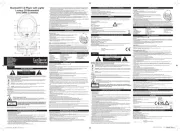
13 September 2025
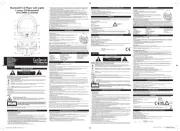
13 September 2025
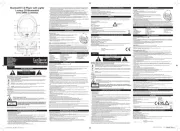
12 September 2025
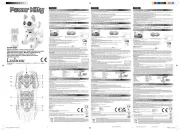
12 September 2025
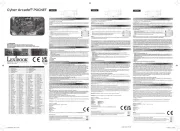
12 September 2025
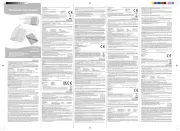
12 September 2025
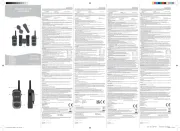
12 September 2025
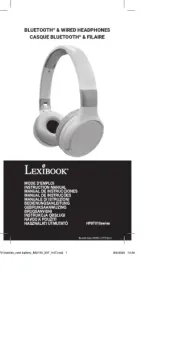
12 September 2025
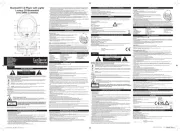
12 September 2025
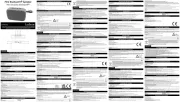
12 September 2025